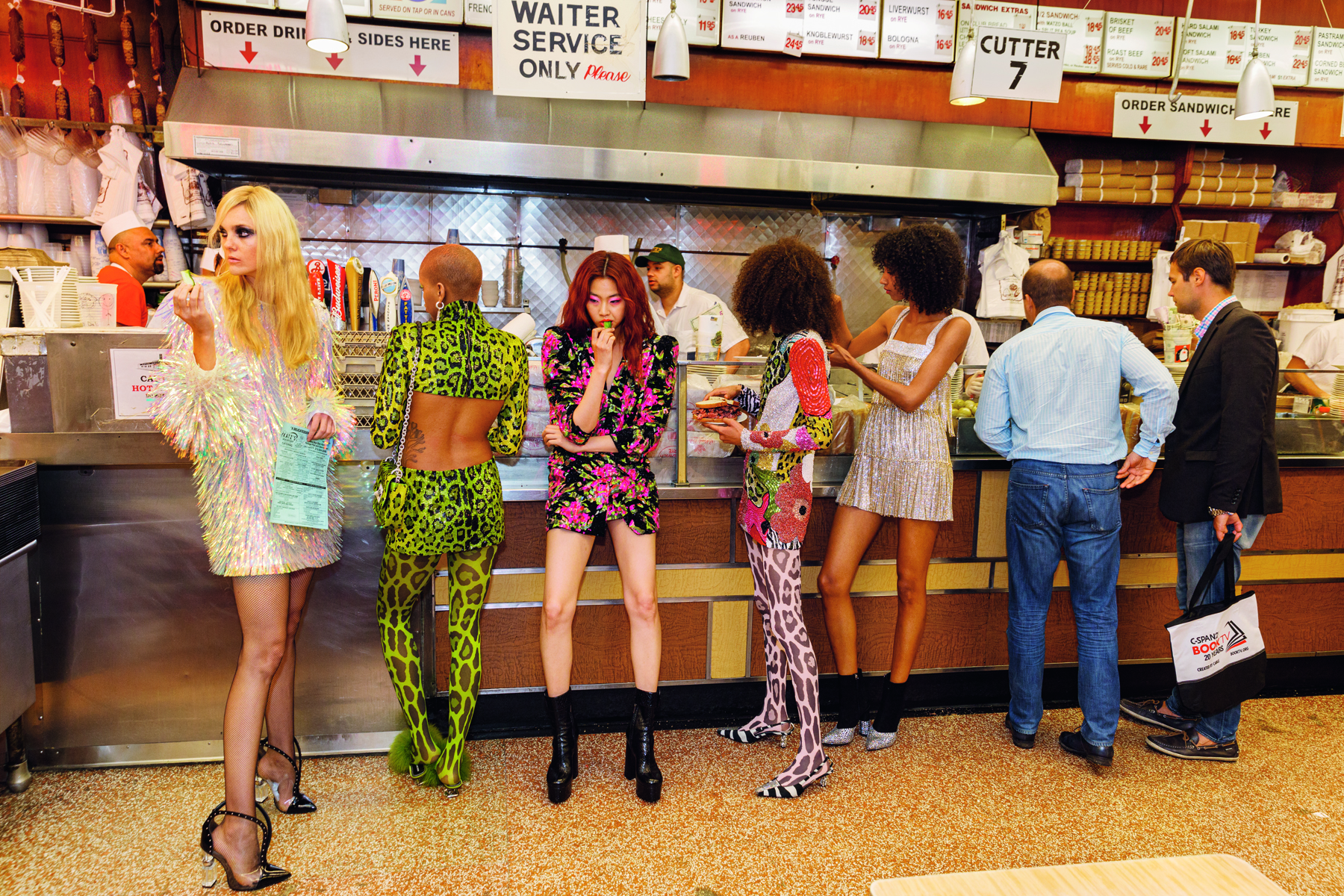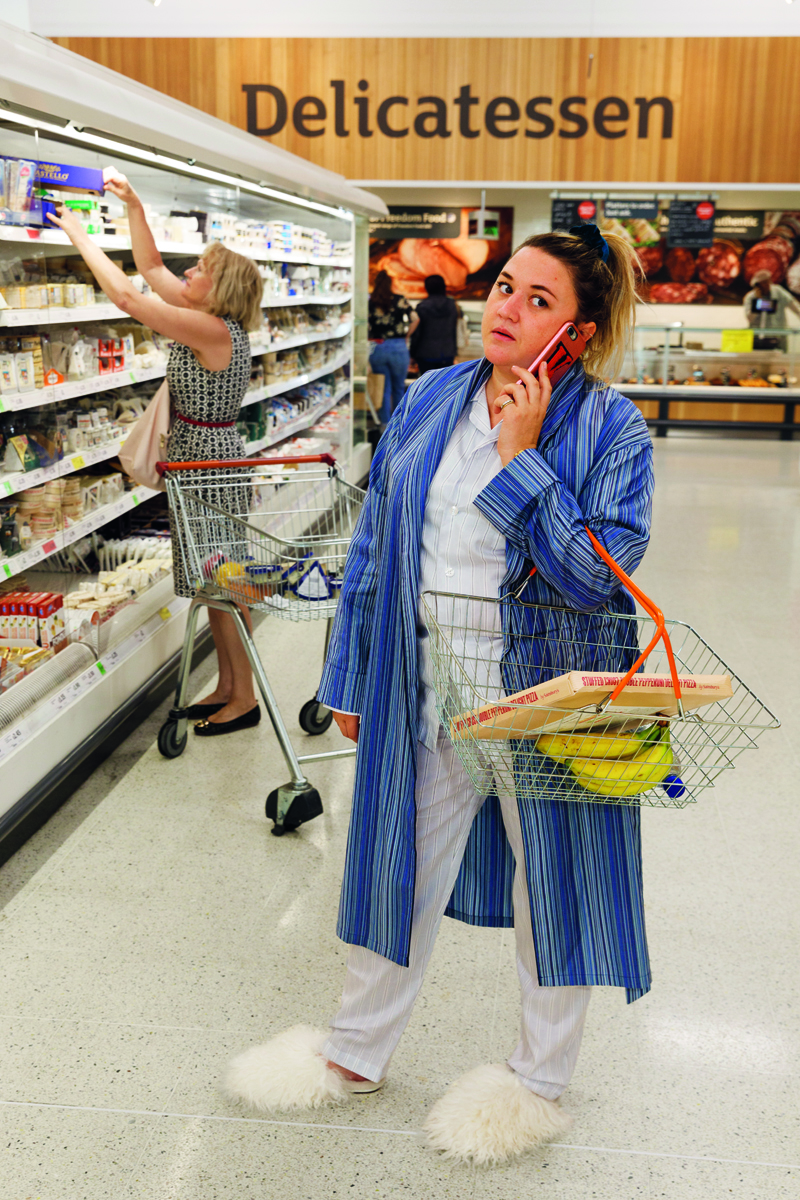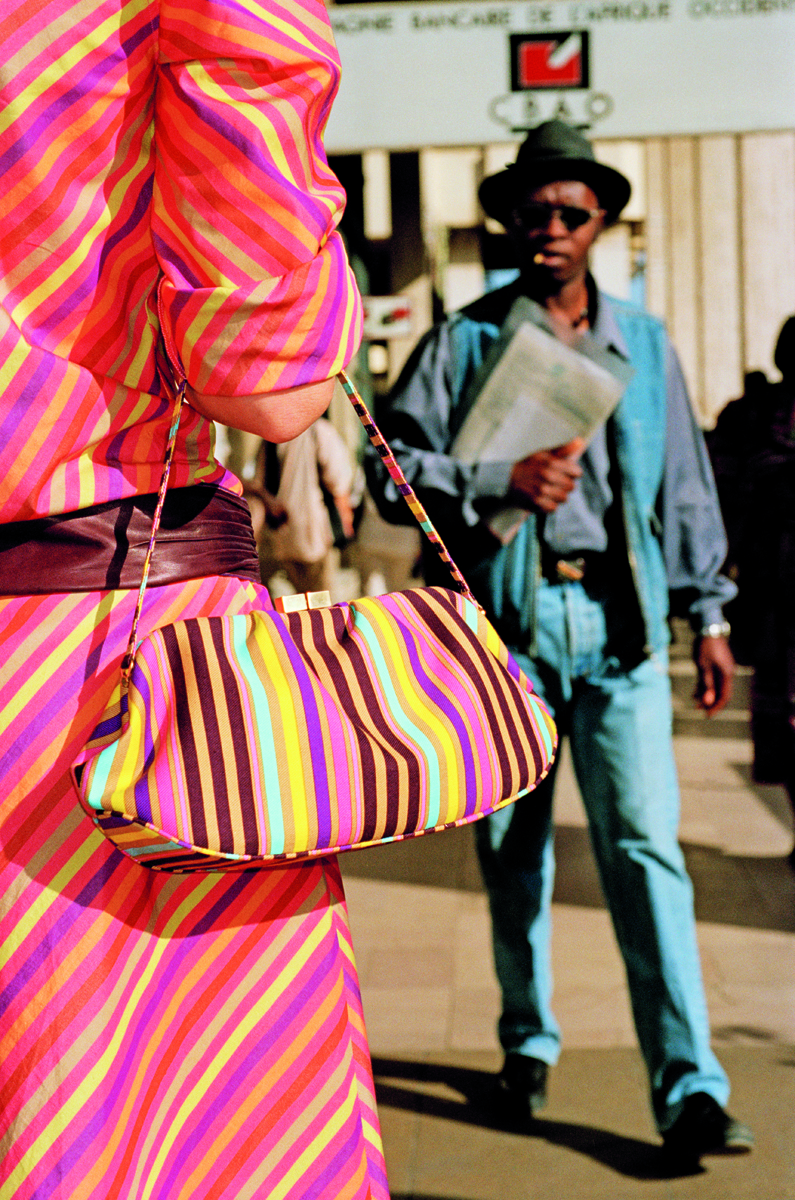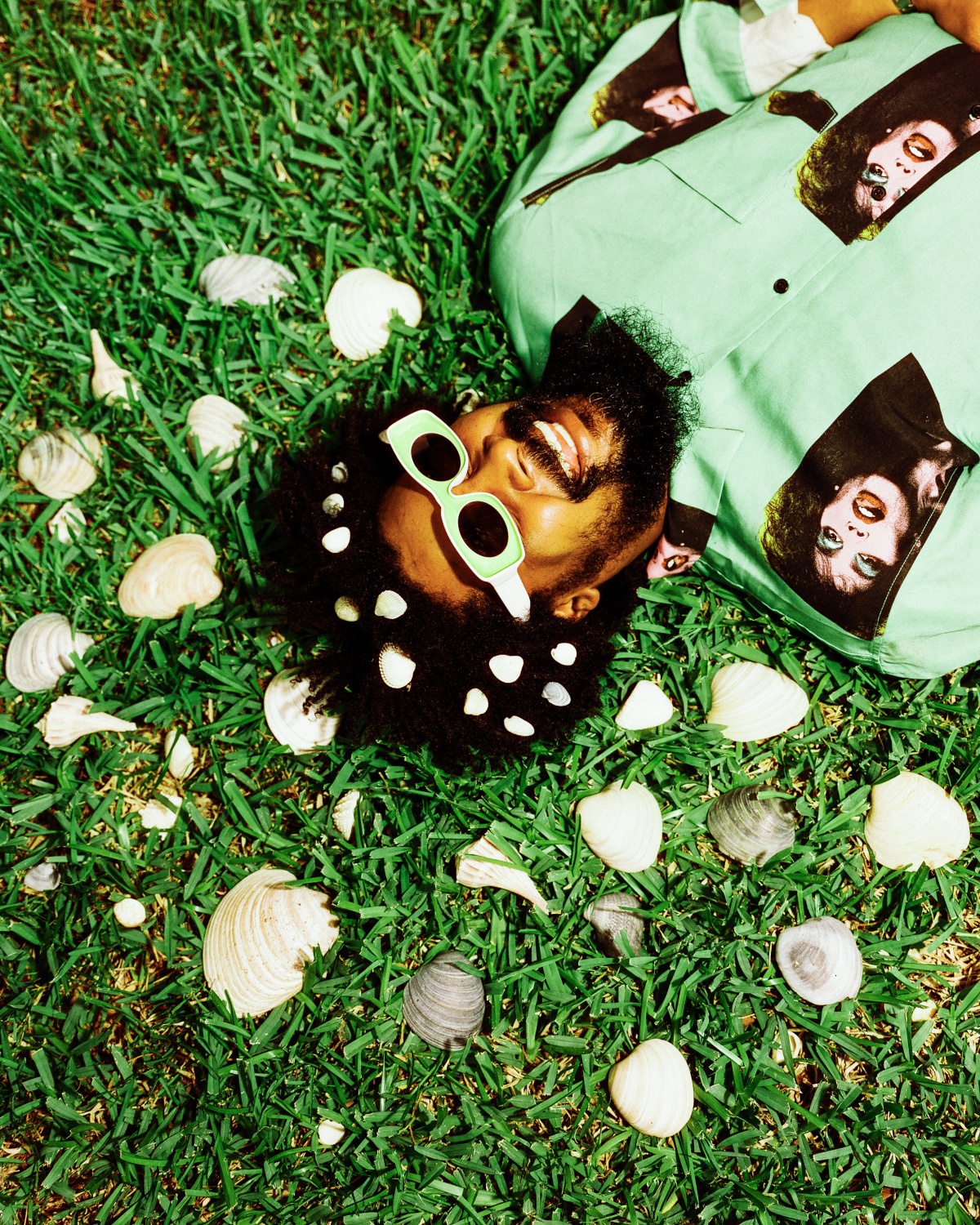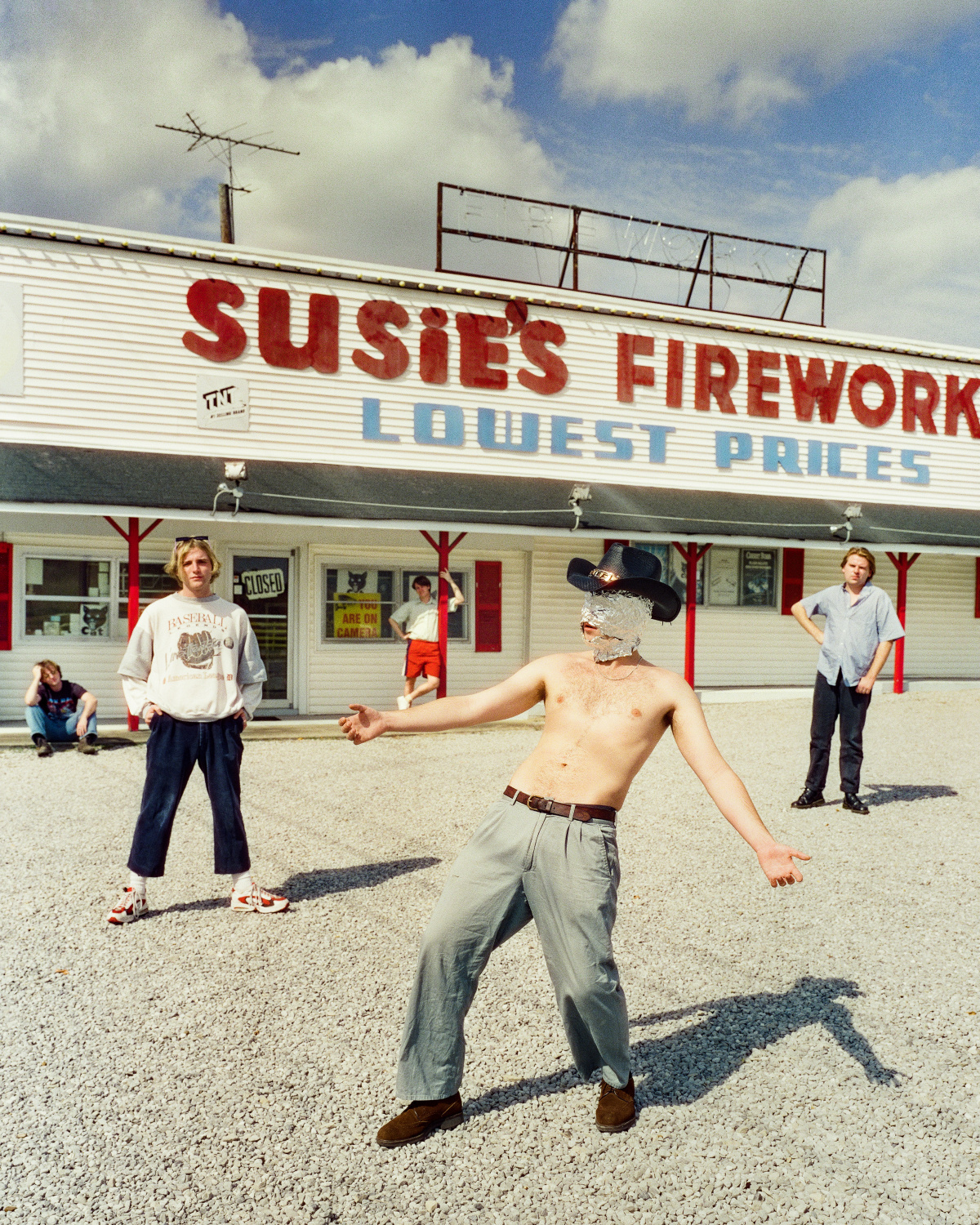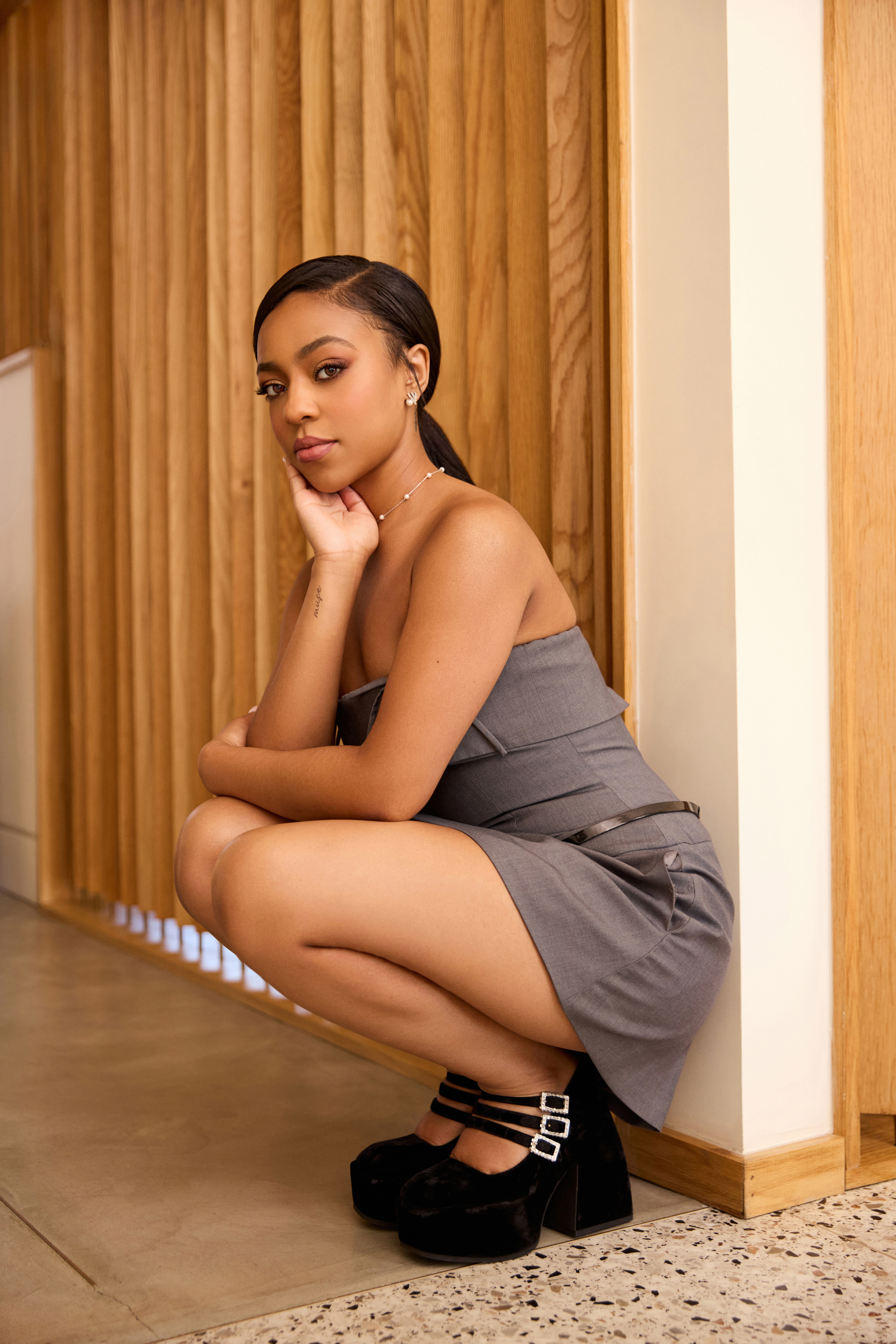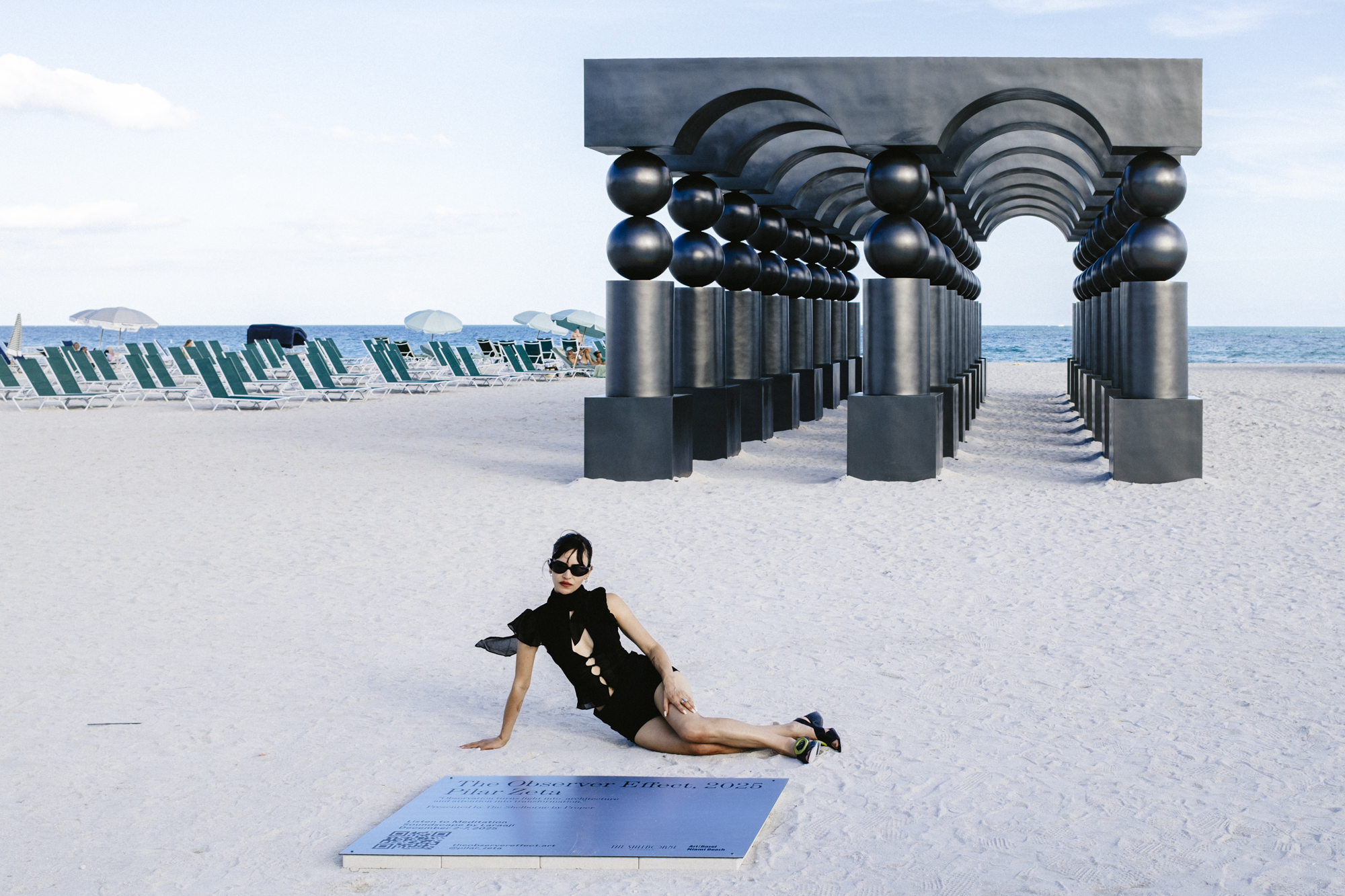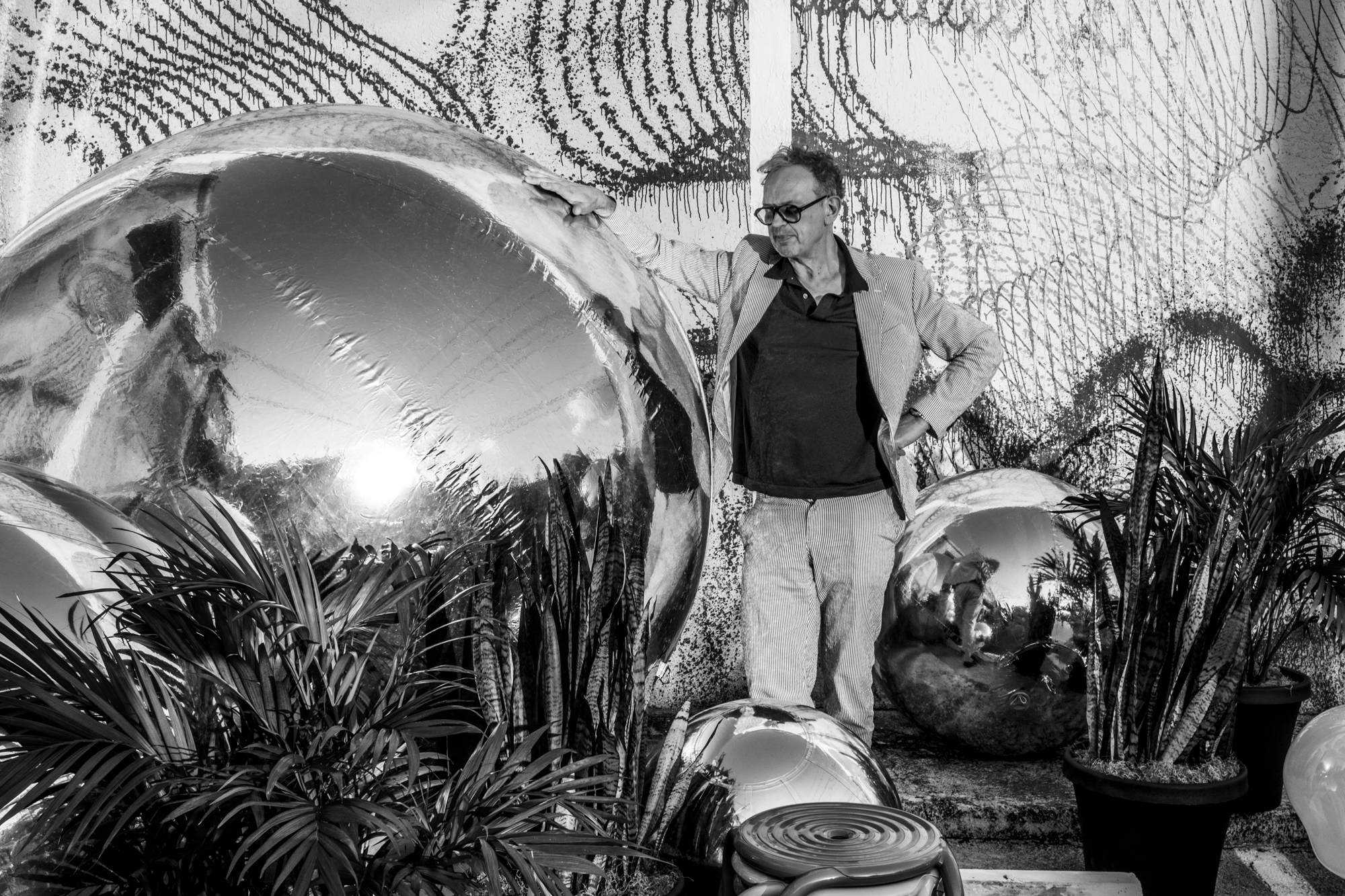Martin Parr is renowned as one of the UK’s greatest photographers of human life, known for his intimate, satirical, and anthropological critique of life in Britain. His entertaining and accessible photos have won several awards, including the Erich Salomon Award for Photojournalism for lifetime achievements. He has been a member of Magnum Photos, one of the most influential photo agencies in the world, since 1994. His recent book, Fashion Faux Parr (Phaidon Press, $59.95), showcases his collection of fashion photography for the first time in one volume.
Pooneh Ghana is a music photographer and videographer who has captured images of musicians including Olivia Rodrigo, Tame Impala, and Beck. Born and raised in San Antonio and coming of age in Austin, Texas, she began pursuing her passion for photography by taking Polaroids at concerts when she was in high school. Currently, she is touring with singer-songwriter Noah Kahan.
Here the photographers meet to discuss their work and process for the first time. —Gianna Annunzio
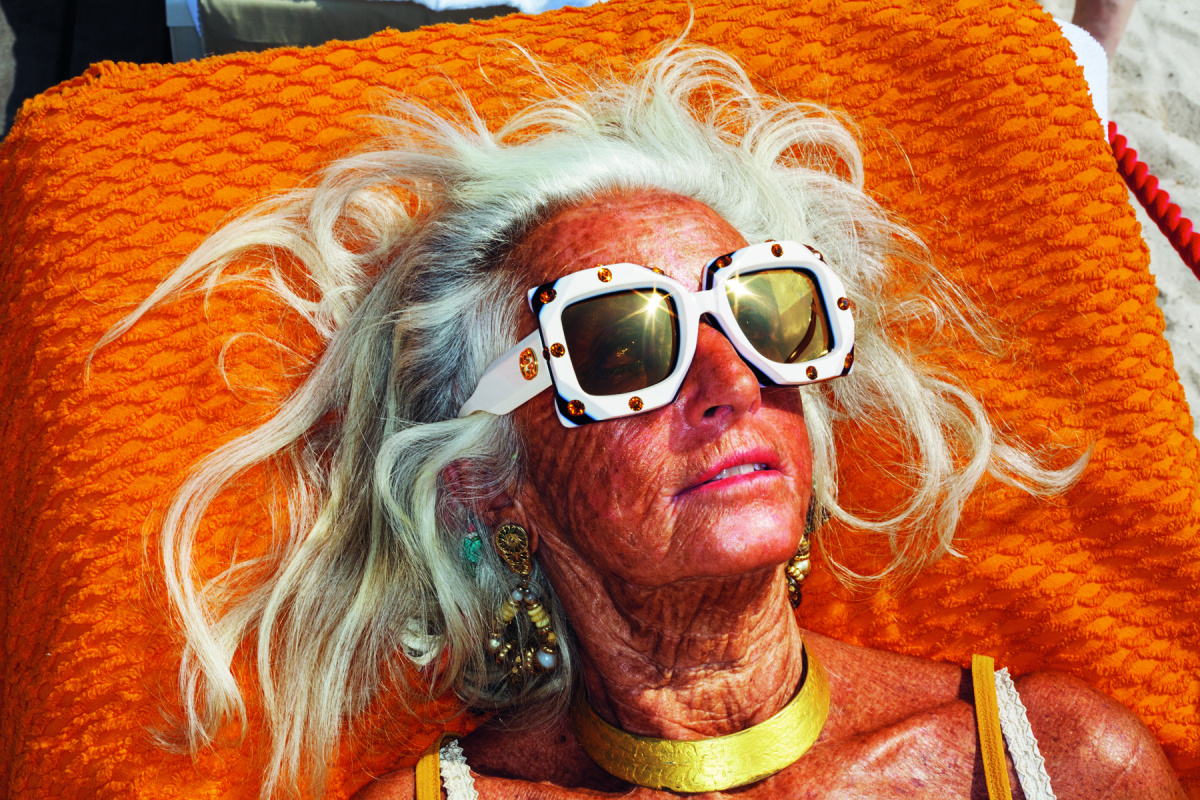
“When people ask me for a Martin Parr photo, that’s all I can take,” Martin says. “I have quite a bright color palette, use a bit of flash, and it’s there.” Cannes, France, 2018. Commissioned by Gucci. Photo courtesy Martin Parr / Magnum Photos
Gianna Annunzio: Martin, your work is well known for capturing spontaneous moments of public life, though your recent book features organized, posed fashion photography. Is there a difference in your approach here versus your typical capture of organic moments?
Martin Parr: The big difference is when I’m shooting fashion, I can move the models around. When I’m doing my own documentary work, it’s me that moves so I can get the right angle. There’s really nothing more to it.
Pooneh Ghana: The preparation for both live music and portraiture work brings the same feeling of excitement when I plan it, but the preparation for it is so different. With portraiture work you’re in complete control of the setup, the location, what the model does, how they feel in the situation. It’s all in your hands.
With live music, you’re throwing yourself into the situation and you’re not in control of it. You have to figure out how to document what’s going on in a way that resonates through the photo. Really for both, but the process is so different. For me it’s just as exciting and makes me just as nervous, in a good way. I love shooting in both worlds because I don’t want to just do live music or portraiture. I want to be good at all of them. That’s my approach to music photography in general.
Martin: Do you ever get bored shooting the same thing every night?
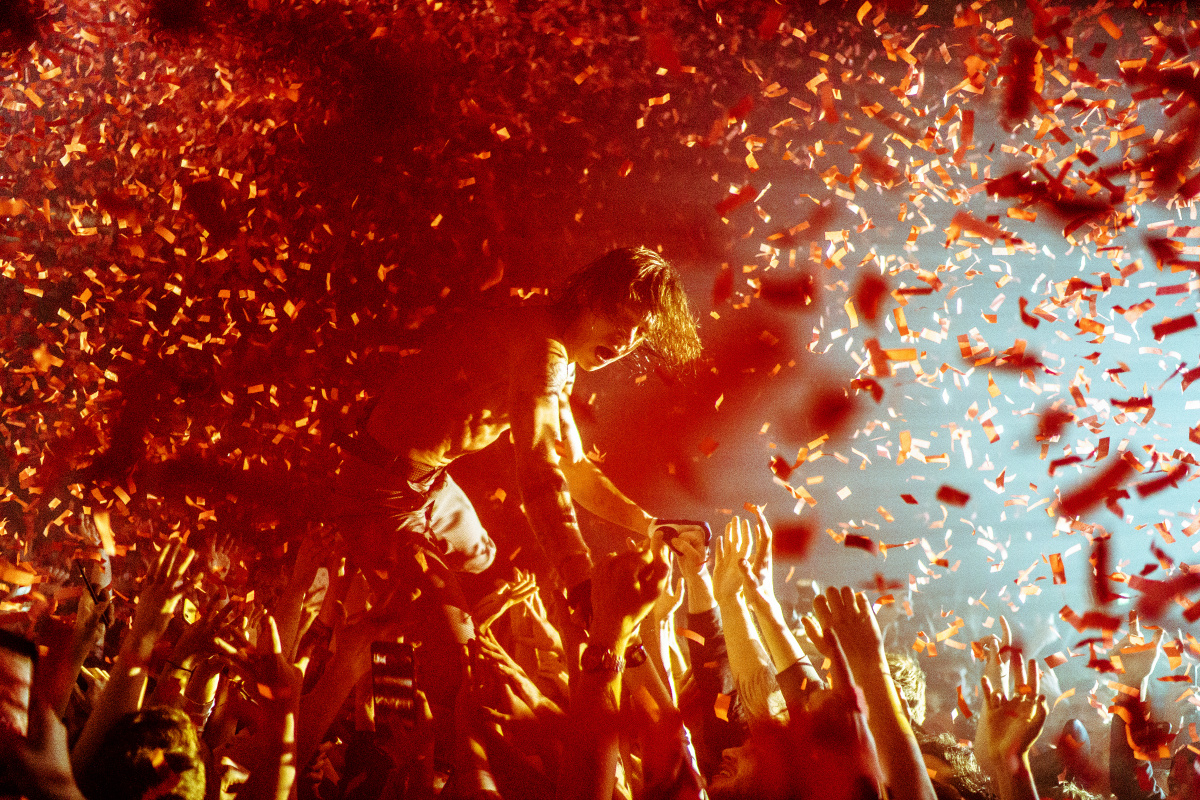
Even if the venues look the same, Pooneh believes there’s something special about each shooting location. Above, Cage the Elephant by Pooneh Ghana
Pooneh: Things can get repetitive. I’ve been on tour with Noah Kahan for four months, and I could easily let myself become a cog in the system and think, “OK, I know exactly what’s going to happen. I’m going to shoot the same thing every night.” Or I could push myself and say, “You know what? Today I’m going to shoot on my Mamiya 72.”
Or “Today I’m going to get some stunning portraits of Noah.” On tour you’re in such a good position because every day you’re in a different city. Even if the venues look the same there’s something special about each location. I try to take advantage of that the best I can. I’m also not completely jaded by this industry yet. I still have that drive to shoot.
Martin: Do you shoot photos of the city you’re in?
Pooneh: I try to. I always have a camera on me. Walking around when we have free time is a lot more entertaining than sitting in a venue for eight hours. Whether you’re doing it consciously or not, just having a camera puts you in that mindset. That’s what I did years before I was doing this full-time. Especially shooting on film, as you know, you’re thinking a little more about what you’re doing.
- A candid London grocery store shot, comissioned by Chaos 69. “I’m capturing my relationship to the UK across a long period of shooting,” Martin says. Photo courtesy Martin Parr / Magnum Photos
- Fashion shoot for Rebel magazine in Dakar, Senegal, 2001. Photo courtesy Martin Parr / Magnum Photos
I remember The White Stripes had this peppermint-colored Holga camera they were selling when I was 15. It sold out immediately. That got me into the Lomography world.
From there I was buying cheap Holgas and Vilias, taking them to shows and shooting. At the time it was me just having fun on film. I think learning on film was an important foundation for how I shoot and my “look” now. Even in the way I developed my skills as a photographer since I’m not technically trained. Everything I learned was on my own. Shooting on film was a huge part in that journey.
Gianna: How do you each typically choose your subjects?
Martin: Most of the work I do is my own work. I’ll take photos at certain events I want to go to. I’ve built up this very extensive archive of work in Britain over the last 50 years, so I’m adding to that all the time. I’ve done a few music albums, too—Richard Hawley, Madness, artists like that. With my fashion book, obviously you get a fashion assignment. If it’s editorial you have a bit more freedom. If it’s a commercial shoot you get paid a lot more, but you have less freedom. The more you get paid the more boring the job.
- “I love shooting in both worlds because I don’t want to just do live music or portraiture,” says Pooneh. “I want to be good at all of them.” Above, Danny Brown by Pooneh Ghana
- With portraiture work, Pooneh feels she has complete control. “It’s all in your hands,” she says. Above, post-punk band Shame by Pooneh Ghana
Pooneh: Yes, it’s kind of comical. Sometimes you get these huge jobs with huge paychecks. Then you go there and you realize, “Wait, this is actually really easy.” In the music world a lot of choosing a subject centers around being at festivals or being around new people all the time. When it’s not planned I do a lot of observing my surroundings. It’s a mix of both. I think you just know a good shot when you see it a lot of times.
I’m curious how you pick your subjects, Martin, because you’ve been doing this for so long. How do you choose shooting something that’s interesting to you?
“The more you get paid the more boring the job.”
Martin: There are certain things. I do different chapters of work in the UK. I’ll pick a new subject matter and add to the archive I already have. I’ll be going to some music festivals next weekend; there’s one in Bristol.
Pooneh: That’s cool. I can’t wait to see that. It’s fun losing yourself in the masses that way, while still capturing everything. I would love to document you at a music festival. Just a day in the life of you going to see Lana Del Rey or buying a corn dog.
Martin: I was in Glastonbury the last two years.
Pooneh: I was there two years ago! Glastonbury with Martin—that would be sick.
Martin: You’d just see me taking pictures. If someone will commission that, fair enough. We’ll do it.
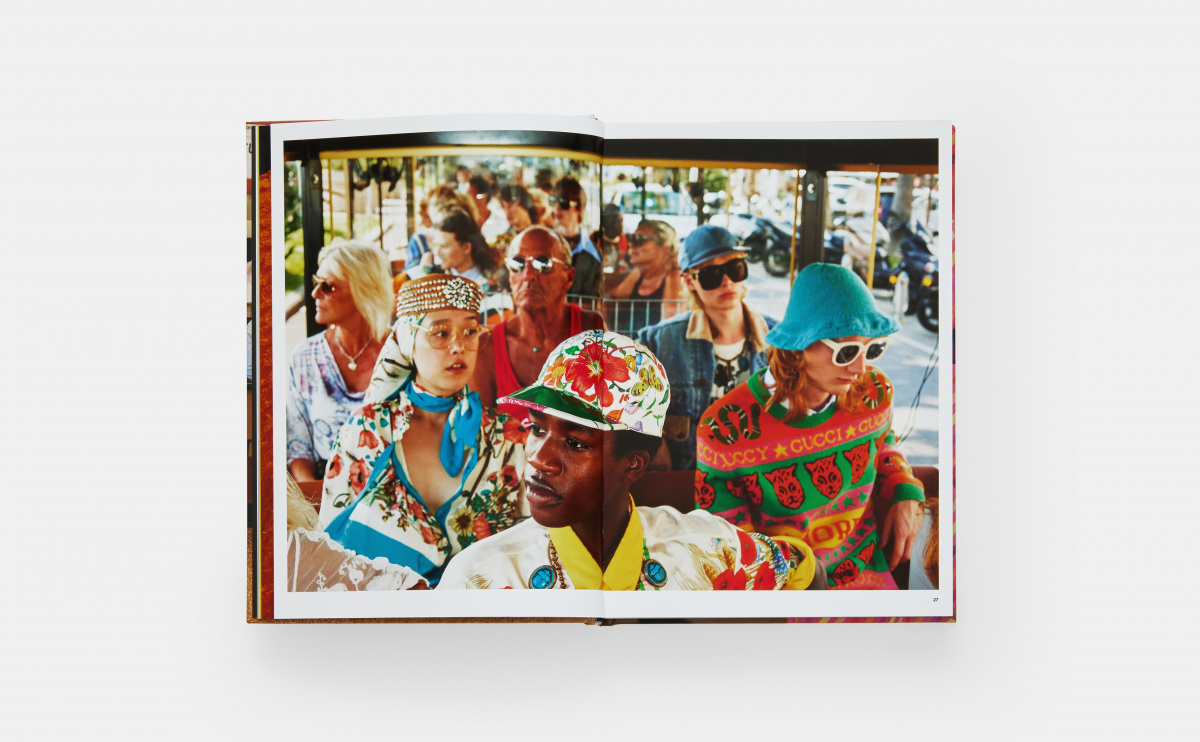
Color abounds in this shot from the Gucci Cruise 2019 Lookbook. From Fashion Faux Parr by Martin Parr, with essays by Patrick Grant and Tabitha Simmons. Phaidon
Pooneh: Along the lines of shooting on film—awhile back I did an album shoot with a British band called The Big Moon. There was a super bloom happening in LA and they wanted to shoot on Aerochrome, which I’d never shot on up until that point.
I did research on how it works and the different filters you need to use, and the shots came out amazing. It’s crazy how sensitive that film is. The slightest under or over exposure on it and the photo is completely blue. In some ways it is a mistake, but ultimately those ended up being amazing shots. It’s one of my favorite shoots because I went in so fearful, but I went for it. They put their trust in me, and we ended up getting some of my favorite shots ever.
Martin: Doesn’t that film turn everything green into red, too?
Pooneh: It does. Everything green becomes a red-pink depending on what filter you use. On eBay each roll was about $45. Then I had to send it to Europe to get processed; it was a whole thing. People try to make knockoff versions of it, but real Aerochrome is tough to find.
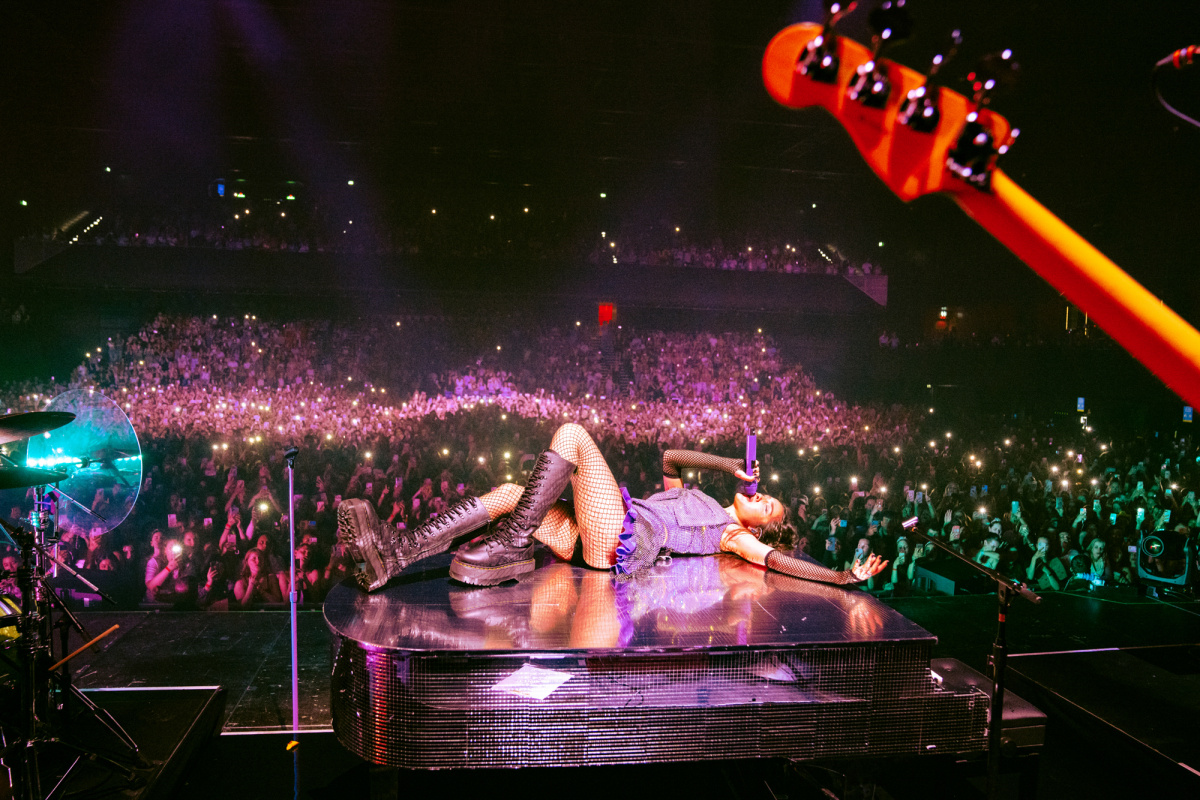
Olivia Rodrigo in front of an audience during her European tour. Photo by Pooneh Ghana
Martin: I’m useless at anecdotes from my shooting days. The work just comes naturally. When people ask me for a Martin Parr photo, that’s all I can take. When I’m out on a shoot I just do what I know best. I have quite a bright color palette, use a bit of flash, and it’s there. It’s very simple.
Pooneh: The most important thing I have is my perspective. People who follow your work want to see it through your eyes.
Martin: The introduction of digital cameras changed the work for me. I switched over in 2008, when the quality of those cameras had begun to increase. Since then they’ve only continued to improve. Now I have an iPhone 15 and I seriously shoot on it. The quality is so amazing—it can see more than you can see.
I don’t know what I would do without digital technology. Nowadays I can get a 5D file that’s better than my old Mamiya 7 files. It’s sharper and, of course, we make them all look analog. There’s a certain look with film that we find very attractive, so we process it in a way where you wouldn’t know it’s digital. This way I can impersonate film and keep very happy.
I’m amazed you’re still with film. Do you think you’ll ever go digital?
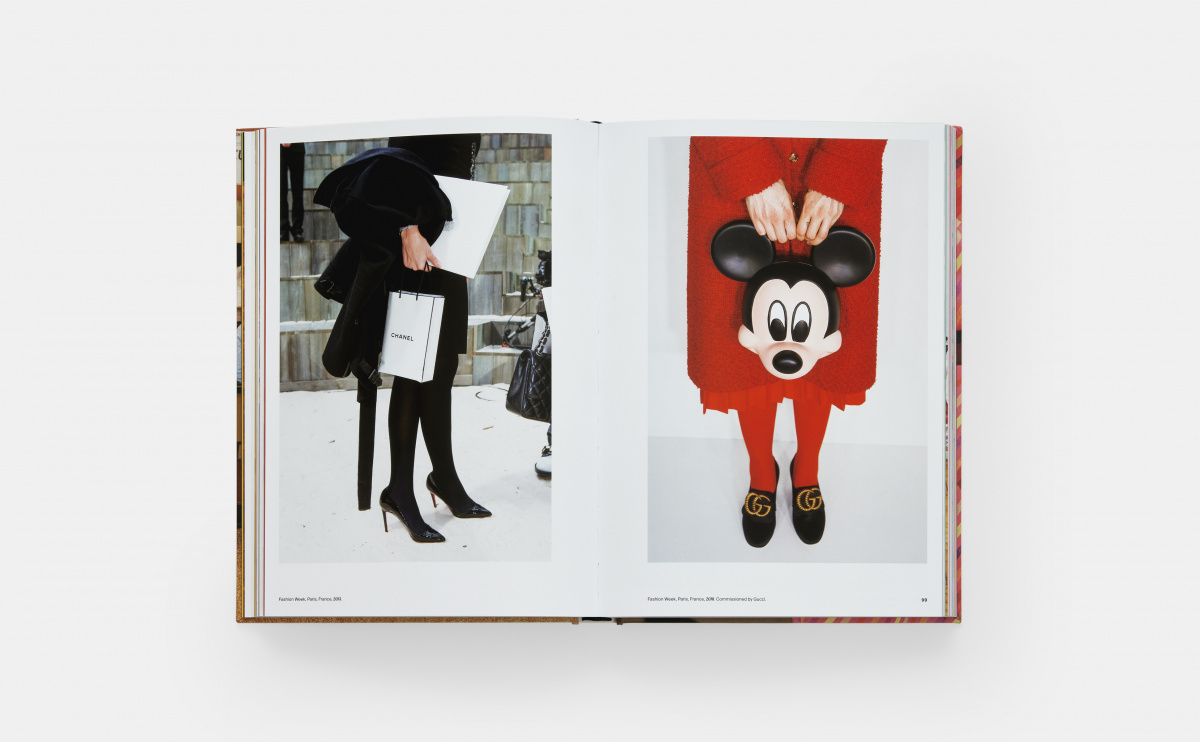
Above left: Fashion Week, Paris, France, 2013. Above right: Fashion Week, Paris, France, 2018. Commissioned by Gucci. From Fashion Faux Parr by Martin Parr, with essays by Patrick Grant and Tabitha Simmons. Phaidon
Pooneh: I do shoot digital as well; I need to with my live music work. When I’m allowed to, when the film is covered, I love doing most of my BTS and portrait work on film.
Martin: I’m relieved to hear you do digital as well. I’m worried about you just doing film because it’s so slow. You have to process the film, make contacts, select the image, scan it. It takes forever.
Pooneh: Even though it’s slower, I think ultimately the result is worth whatever speed I lose. Everyone has a certain romantic idea around shooting on analog. It’s making such a huge comeback. Musicians and clients are now requesting film and Super 8 footage. It’s a psychological thing—I shoot differently on it. I enjoy the process of it. The rush service at the lab helps a lot too.
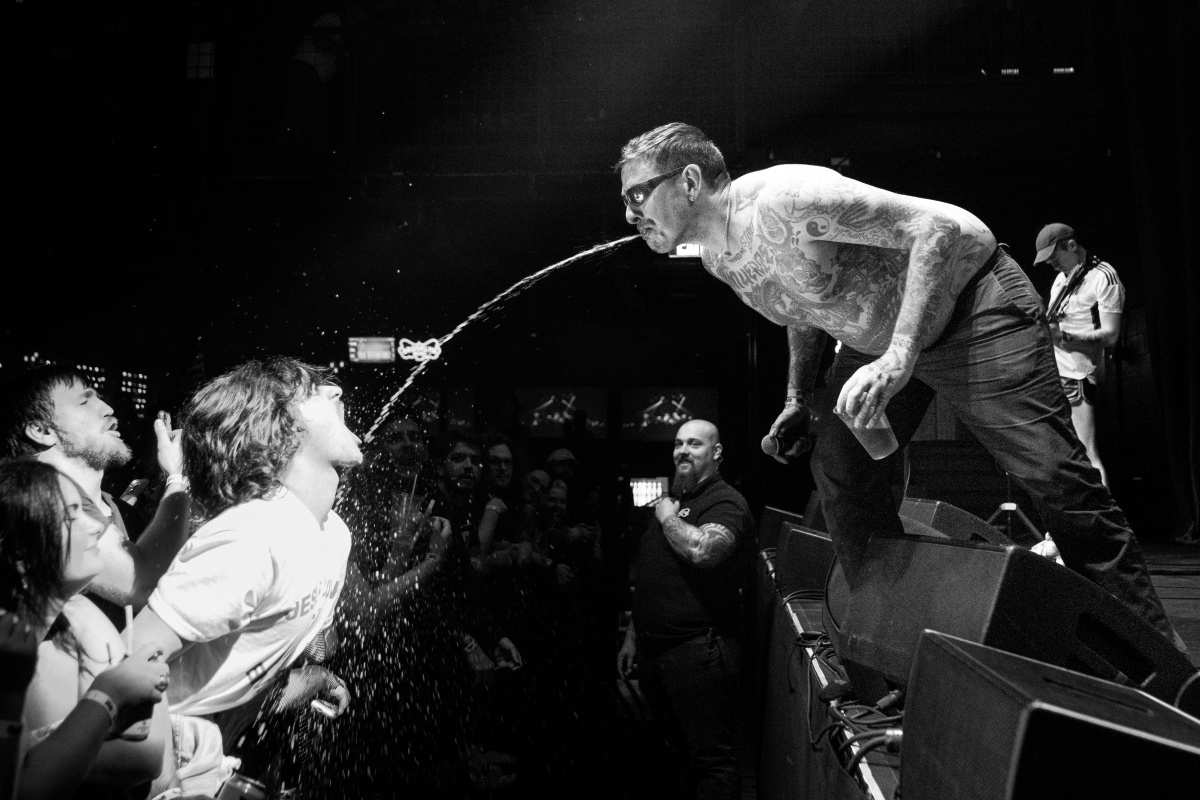
Sebastian Murphy of Swedish punk band Viagra Boys pulls an impromptu stage antic. Photo by Pooneh Ghana
Martin: I’ve had many years with film. I look back on my black and white days, and my color negative days with great affection. I’m just glad to have moved on. But we continue to find old pictures, scan them, and load them into the archive. We try to keep them alive as well. “The Last Resort,” which I shot in the ’80s, was color negative. That was really the breakthrough in terms of my career. I owe a lot to what film has done for me.
Things like the selfie stick from my “Death by Selfie” series, they’re now in decline. They’re history. Years ago selfie sticks were ubiquitous. I like the fact that I’ve documented the world with selfie sticks. It’s always a bit absurd. If I’m doing work on tourism everyone’s got an iPhone. People still take selfies, but not so much with the stick.
Pooneh: Maybe I should put my Mamiya 7II on a selfie stick and shoot myself on film.
Martin: My God, I don’t think a selfie stick could handle the weight. Photographing people shopping in supermarkets in the ’80s was quite a revelation. I look back and they all look very dated now, even though they’re taken in sort of a bright color. So that’s interesting. That’s my one thing I really value with the benefit of hindsight.
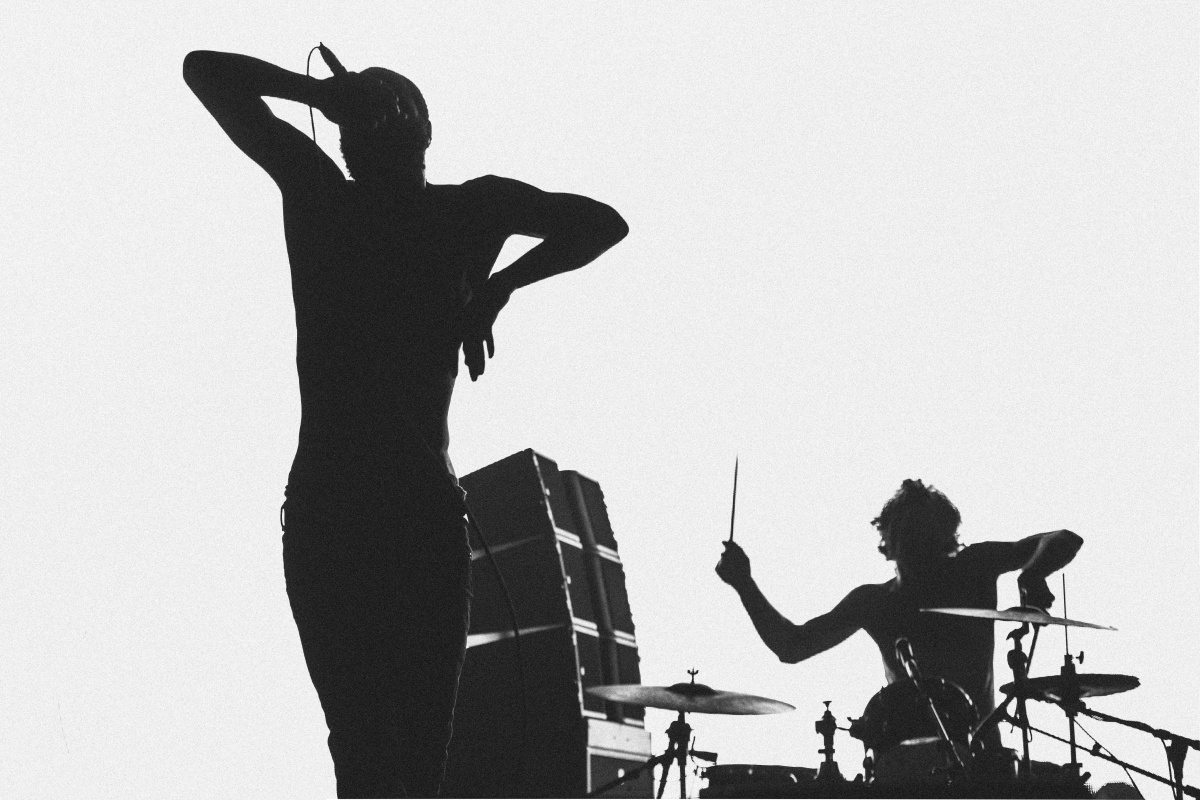
A black and white silhouette captures Death Grips in a unique live show moment. “With live music, you’re throwing yourself into the situation and you’re not in control of it,” Pooneh says. Photo by Pooneh Ghana
Pooneh: I really love that style of shooting. When I’m acting as a fly on the wall on tour with an artist, I love lifting the veil on who people think their favorite musician is.
I think about when I was 15 and had photos of The Strokes on my wall. Those photos subconsciously influenced me so much. Right now, as I’m on tour with Noah, I want to take those types of photos for his fans. Even if it’s just a photo of him playing golf or in an ice bath. Those are the shots people want to see.
Martin: I’m similarly capturing my relationship to the UK across a long period of shooting—though it’s inevitably a set of pictures about Britain in particular. That’s part of my legacy. I want people to take away whatever they’d like from my photos; I assume someone out there is enjoying it. I’m just very happy to have an audience.
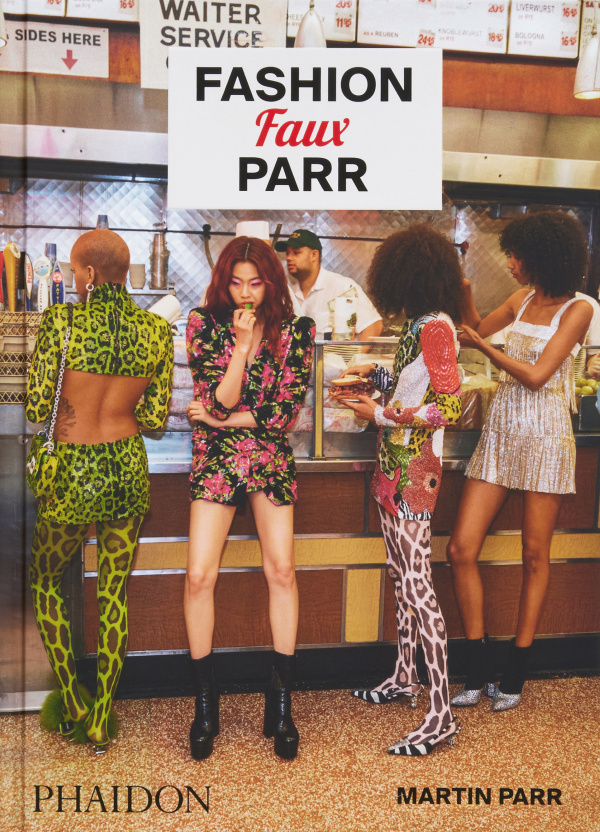
Fashion Faux Parr (Phaidon Press, $59.95) showcases Martin Parr’s collection of 250 fashion photography images for the first time in one book. Includes essays by Patrick Grant and Tabitha Simmons.
A version of this article originally appeared as the cover story to Sixtysix Issue 12.
